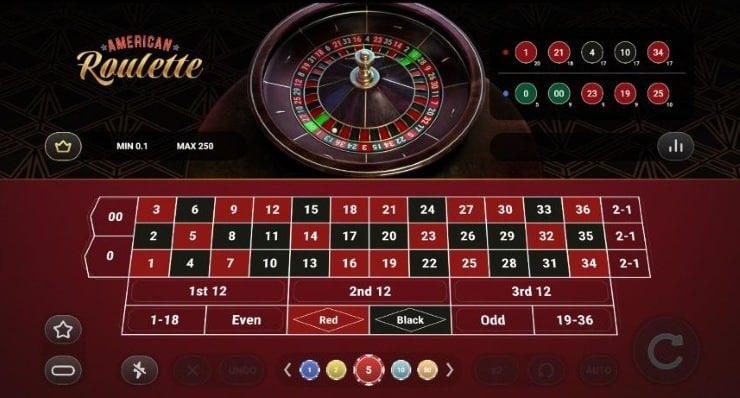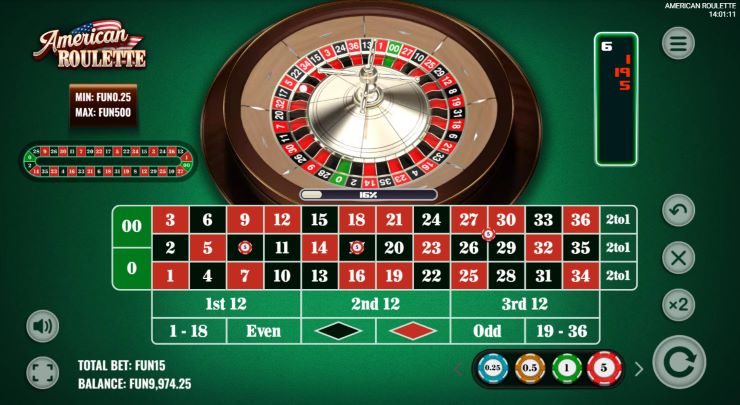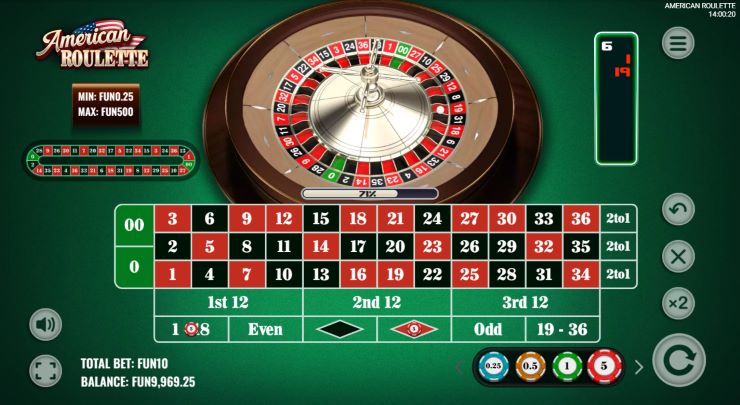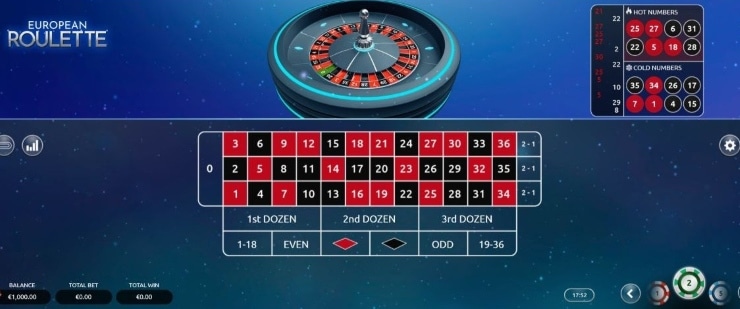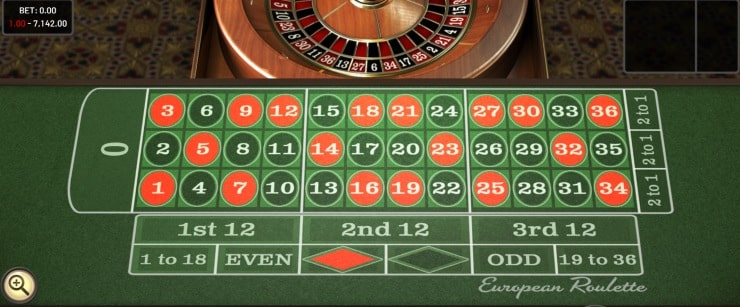How to Play Roulette – Roulette Rules
Matteo Farina, Senior Editor
Last Updated: 26/09/2025
Darragh Harbinson, Senior Editor
Fact-checker
How to play roulette is a question many new and curious players in the UK ask when stepping into the exciting world of casino gaming. This guide will show you the essential roulette rules, helping you understand the game’s thrilling yet straightforward mechanics. You’ll find clear explanations tailored for UK players, including key tips on betting options and odds, all within the framework of UK Gambling Commission regulations and legal age requirements.
- Show full guideShow less
What is Roulette?
Roulette is a popular casino game originating from France, in which players place bets on where a ball will land on a spinning wheel. The wheel is divided into numbered pockets, ranging from 1 to 36, alternating in red and black, with one or two green pockets for zero (depending on whether it’s European or American roulette). Players can bet on single numbers, groups of numbers, colours, or whether the outcome will be odd or even.
Once all bets are placed, the dealer spins the wheel and rolls a small ball in the opposite direction; when it comes to rest in one of the pockets, the winning bets are paid out. Roulette combines elements of chance and strategy, making it a timeless favourite in both land-based and online casinos. This is partially because of the various roulette odds available on each section of a board.
Types of Roulette
There are several variations of roulette, but the two most commonly played versions are European Roulette and American Roulette. While both follow similar rules, they have some key differences that impact game-play, especially when considering complex bets.
🎲 European Roulette – European Roulette is the preferred version in the UK and across much of the world. It features 37 numbered pockets (1 to 36, plus a single zero). The single zero gives the house a lower edge compared to the American version, making it more favourable for players who understand a betting system.
🎲 American Roulette – American Roulette, on the other hand, includes an additional double zero (00) pocket, bringing the total to 38 pockets. This extra pocket increases the house edge significantly, which can make it less advantageous for players compared to European Roulette.
For UK players, European Roulette is the popular choice due to its better odds and adherence to regional gambling preferences, especially among popular casino games.
Roulette Wheel and Table Layout Overview
The roulette wheel itself is divided into numbered pockets, alternating between red and black, with the zero (and double zero in American Roulette) marked in green. The numbers follow a specific sequence designed to create balance and randomness.
The table layout corresponds to the numbers on the wheel, providing players with a structured area to place their bets. It includes spaces for individual numbers (straight bets) and combinations such as red or black, odd or even, and various groupings of numbers. By understanding the basic betting layout, players can easily strategise their bets and maximise their enjoyment of the game.
Roulette Wheel and Table Setup
Roulette is one of the most iconic and visually striking games you’ll find in any UK casino, thanks in large part to its distinctive wheel and betting layout.
The Roulette Wheel
In the UK, the European roulette wheel is the most commonly used version. It features 37 numbered pockets, ranging from 1 to 36, plus a single green zero (0). The numbers alternate between red and black, with the zero always coloured green, ensuring that your initial bet can be strategically placed. This design offers better odds compared to its American counterpart, which is why it’s favoured by UK casino sites and players alike.
European vs. American Roulette Wheels
While European roulette has 37 pockets, American roulette features an additional double zero (00), bringing the total to 38 pockets. This extra number increases the house edge, making American roulette slightly less favourable for players.
Feature European Roulette American Roulette Total Pockets 37 (1–36 + 0) 38 (1–36 + 0 + 00) House Edge 2.7% 5.26% Preferred in UK? ✅ Yes ❌ No As a general rule, if you’re playing in the UK – whether in a high street casino or on a licensed online platform – you’ll almost always be offered the European version, thanks to its more player-friendly odds.
The Table Layout
The roulette table is split into two main sections:
- The inside bets area, where you place chips directly on numbers or small combinations.
- The outside bets area, which covers larger groupings like red/black, odd/even, and dozens.
Each table will clearly display the minimum and maximum bet limits, and chips are colour-coded per player in physical casinos to avoid confusion.
Types of Bets in Roulette
Roulette offers a variety of betting options, generally categorised as inside bets and outside bets. Each type of bet varies in risk, payout rate, and complexity, allowing players to tailor their betting strategies and gaming experience.
Inside Bets
Inside bets are placed on individual numbers or small combinations of numbers. These bets typically offer higher payouts because they are less likely to win, making them more appealing to risk-takers. The main types of inside bets are:
- Straight Bet: A bet on a single number, placed directly on the number on the table. The payout is 35 to 1.
- Split Bet: A bet on two adjacent numbers, placed on the line between them. The payout is 17 to 1.
- Street Bet: A bet on a row of three numbers, placed on the outer edge of the row. The payout is 11 to 1.
- Corner Bet (Square Bet): A bet on four numbers that meet at a corner, placed at the intersection. The payout is 8 to 1.
- Six Line Bet (Double Street): A bet on two adjacent rows (six numbers total), placed at the edge where the two rows meet. The payout is 5 to 1.
Outside Bets
Outside bets cover larger groups of numbers and have a higher probability of winning, but the payouts are generally lower. These bets are ideal for cautious players or those new to the game. The main types of outside bets include, but are not limited to, a straight up bet in addition to others.
- Red/Black: A bet on whether the winning number will be red or black. The payout is 1 to 1.
- Odd/Even: A bet on whether the winning number will be odd or even. The payout is 1 to 1.
- High/Low: A bet on whether the winning number will be in the low range (1-18) or the high range (19-36). The payout is 1 to 1.
- Dozens: A bet on one of the three groups of numbers (1-12, 13-24, or 25-36). The payout is 2 to 1.
- Columns: A bet on one of the three vertical columns of numbers on the table. The payout is 2 to 1.
Understanding these types of bets and their associated payout rates is key to developing a strategy and enjoying the game of roulette to its fullest.
How to Place Bets on Roulette
Roulette tables in the UK follow European rules, meaning there is a single zero (0) on the wheel and table. The table layout consists of numbers on the wheel and various betting options :
- ➡️ Numbers 1 to 36 (split into three columns and twelve rows)
- ➡️ A single zero (0) at the top
- ➡️ Red and black colours alternating across numbers
- ➡️ Additional betting zones like:
- 1st 12, 2nd 12, 3rd 12 (dozens)
- 1 to 18 / 19 to 36
- Even / Odd
- Red / Black
- Columns (marked on the side of the table)
Whether you’re playing at a physical casino or at online roulette sites, the layout remains consistent.
Typical Minimum and Maximum Bet Limits in UK Casinos
Betting limits can vary between venues, but generally:
- ➡️ Minimum bets range from £1 to £5 on inside bets (straight up, splits, etc.)
- ➡️ Outside bets (e.g., red/black, odd/even) often require a slightly higher minimum, around £5 to £10
- ➡️ Maximum bets depend on the table but can be:
- £100 to £500 for inside bets
- £1,000 or more for outside bets in high-limit rooms
Online platforms clearly display limits on each table before you start playing.
How to Place Chips on Different Betting Options
Roulette offers a wide range of betting possibilities. Here’s how to place chips depending on the type of bet:
Inside Bets (on specific numbers or combinations)
- Straight up – Place your chip directly on a single number (e.g., 17).
- Split – Place your chip on the line between two numbers (e.g., 17 and 20).
- Street – Place your chip on the outer edge of a row of three numbers (e.g., 1, 2, 3).
- Corner (or square) – Place your chip at the intersection of four numbers.
- Six-line (or double street) – Place your chip where two streets meet.
Outside Bets (covering larger sections)
- Red or Black – Place your chip on the red or black diamond.
- Odd or Even – Place your chip on the “Odd” or “Even” section.
- 1 to 18 / 19 to 36 – Bet on the lower or the higher halves.
- Dozens (1st 12, 2nd 12, 3rd 12) – Cover a group of 12 numbers.
- Columns – Bet on one of the three vertical columns on the side.
💡 Online Play Tip – When playing online, use your cursor or finger (on mobile) to click or tap the bet area. The system will automatically show you the payout and allow quick chip selection (e.g., £1, £5, £10).
The Roulette Spin and Outcome
When the dealer spins the roulette wheel, the excitement begins. A small white ball is released in the opposite direction of the spin, creating suspense as players wait for it to land on a numbered pocket during the subsequent spin.
How the Dealer Spins the Wheel and Rolls the Ball
In a traditional UK casino, once all players have placed their bets, the dealer – also known as the croupier – announces, “No more bets.” At this point:
- The roulette wheel is spun in one direction (usually clockwise).
- The ball is rolled in the opposite direction along the outer edge of the wheel.
- As the ball loses momentum, it bounces across the numbered pockets before settling into one.
This process is entirely mechanical and random, ensuring fairness. At live dealer casinos, the action is streamed in real-time from a studio or casino floor. For RNG (random number generator) versions, the software simulates the spin with the same result process.
How the Winning Number is Determined
Once the ball lands in a pocket, the croupier:
- Identifies the winning number and colour (e.g., “17 Black”).
- Places a marker (known as a “dolly”) on the corresponding number on the table layout.
- All losing bets are cleared from the table.
- Winning bets are paid out according to the odds of each type of bet.
Here are a few examples of payouts:
Bet Type Payout Straight Up 35 to 1 Split 17 to 1 Street 11 to 1 Corner 8 to 1 Red/Black 1 to 1 Dozens/Columns 2 to 1 What Happens After the Winning Number is Announced
Once all winnings are paid:
- The croupier removes the dolly, signalling that players may now place new bets.
- A new round begins, and players can stack their chips on preferred numbers or sections.
- The cycle repeats with the croupier spinning the wheel again.
For online roulette, a top choice for over 9% of the UK’s population, winnings are automatically credited to your account, and a countdown timer indicates when the next betting round begins.
Odds and House Edge in UK Roulette
Roulette offers a variety of bets, each with different odds and payouts. In UK casinos, you’ll typically be playing European roulette, which has one zero (0) and numbers 1 to 36 — a total of 37 pockets on the wheel.
Here’s a quick breakdown of common bet types and their true odds versus payout odds:
Bet Type Numbers Covered Payout True Odds Straight Up 1 35 to 1 1 in 37 Split 2 17 to 1 2 in 37 Street 3 11 to 1 3 in 37 Corner 4 8 to 1 4 in 37 Six Line 6 5 to 1 6 in 37 Column/Dozen 12 2 to 1 12 in 37 Even Money Bets 18 (Red/Black, etc) 1 to 1 18 in 37 (48.65%) Although some bets have close to 50/50 outcomes (e.g., red/black), the single zero tilts the odds in favour of the house.
What Is the House Edge in UK Roulette?
The house edge refers to the statistical advantage the casino holds over players. In European roulette, the house edge is approximately:
- 2.70% on all bets
This means that for every £100 wagered over time, the casino expects to retain around £2.70.
What About American Roulette?
Some UK online platforms may offer American roulette, which features a double zero (00) alongside the single zero. This increases the total number of pockets to 38, raising the house edge to:
- 5.26%
For this reason, UK players are generally advised to avoid American roulette when possible.
Can You Reduce the House Edge?
While you can’t eliminate the house edge entirely (it’s built into the game), you can make smarter bets:
- Stick to European tables to enjoy the lower house edge.
- Use even-money bets like Red/Black or Odd/Even if you prefer low-risk betting.
- Look for tables offering La Partage or En Prison rules – common in French roulette, which halve your loss on even-money bets if the ball lands on zero. This can reduce the house edge to 1.35%.
Popular Roulette Strategies
Many players follow well-known strategies to guide their betting. While no system can guarantee winnings or beat the house edge, these types of roulette strategy can help with managing risk and maintaining discipline.
🧾 Martingale Strategy
One of the oldest and most popular roulette strategies is the Martingale System. It’s based on a simple principle: after every loss, you double your stake so that when you eventually win, you recover all your losses plus a small profit.
For example, if you bet £1 and lose, your next bet would be £2, then £4, then £8, and so on. Once you win, you return to your original £1 stake. This strategy works best with even-money bets like red/black or odd/even. However, it comes with significant risk. A long losing streak can drain your bankroll quickly, and table limits may prevent you from continuing the sequence.
🧾Reverse Martingale (Paroli) Strategy
The Reverse Martingale, also known as the Paroli system, flips the traditional Martingale approach. Instead of doubling after a loss, you double your bet after a win. The goal is to take advantage of winning streaks and lock in profit while keeping losses minimal.
A typical use of this strategy involves betting £1, doubling to £2 after a win, then £4 after another win, before resetting back to £1. Many players stop after three consecutive wins to secure profits. It’s a lower-risk strategy than Martingale but still carries the risk of losing your winnings with one unlucky spin.
🧾Fibonacci Strategy
The Fibonacci system is based on the famous mathematical sequence where each number is the sum of the two preceding ones (e.g. 1, 1, 2, 3, 5, 8…). You apply this by increasing your bets according to the sequence after each loss.
For example, if you lose a £1 bet, your next bet would also be £1, then £2, then £3, and so on. When you win, you move back two steps in the sequence. This system is often seen as a slower and more cautious version of the Martingale. While it helps control betting amounts, it still relies heavily on eventually winning to recover losses.
🧾D’Alembert Strategy
The D’Alembert strategy is a more conservative option. You increase your bet by one unit after each loss and decrease it by one unit after each win. So, if your initial stake is £2 and you lose, your next bet would be £3. If you then win, you reduce it back to £2.
This approach is slower and more stable than doubling strategies like Martingale and is popular among players who prefer less aggressive betting. It’s especially suited to even-money bets, and while it may not yield huge profits quickly, it helps limit steep losses over time.
🧾Flat Betting Strategy
Flat betting is the simplest approach to roulette, wagering the same amount on each spin regardless of the outcome. Whether you win or lose, your bet remains constant (e.g., always £2 per spin). While this may sound unexciting, it’s a solid strategy for beginners or those looking to stretch their bankroll over a longer session. It avoids large fluctuations and keeps game-play consistent. Although it doesn’t offer a system for recovering losses or amplifying wins, it’s low-risk and great for casual or budget-conscious players.
Top Tips for UK Players
- Stick to European or French roulette tables – avoid American roulette due to its higher house edge.
- Set a clear budget before you start playing and never chase losses.
- Start with even-money bets (red/black, odd/even) if you’re a beginner – they offer the highest chance of winning.
- Use strategies for structure, not profit – they help with discipline, but not with beating the game.
- Play at licensed UK casinos or trusted online platforms regulated by the UK Gambling Commission for fairness and security.
- Take breaks regularly, especially during losing streaks – roulette should always be fun, not stressful.
Summary
Roulette remains one of the most iconic and accessible games in both UK land-based and online casinos. Whether you’re a newcomer or a seasoned player, understanding the basics – from how the wheel works to betting odds and table etiquette – can greatly improve your overall experience.
Here’s a quick summary:
- Most UK casinos use European roulette, which offers better odds (2.70% house edge) than the American version.
- Learn how to read the roulette table and understand the minimum and maximum bet limits before placing any wagers.
- Familiarise yourself with inside and outside bets, and always know the potential payout versus the risk.
- Practice good roulette etiquette – don’t touch chips after the ball is spinning, be polite to the dealer, and avoid crowding others.
- Understand that all bets carry a house edge, and strategies like Martingale or Fibonacci can’t change the long-term odds.
FAQs
What is the minimum legal age to play roulette in the UK?In the United Kingdom, the minimum legal age to gamble is 18. This applies to both land-based casinos and all forms of online gambling, including roulette. Casinos and betting sites are legally required to carry out age verification checks. If you’re visiting a physical casino, you may be asked to show photographic ID such as a passport or driving licence. For online platforms, you’ll typically need to upload identification documents before making a deposit or withdrawal.Is online roulette legal and safe in the UK?Yes, online roulette is fully legal in the UK, provided you play at a website that is licensed and regulated by the UK Gambling Commission (UKGC). This regulatory body ensures that gambling operators adhere to strict fairness, security, and responsible gaming standards. When choosing an online casino, always check for a valid UKGC licence at the bottom of the website. Legitimate platforms use random number generators (RNGs) for fairness and employ SSL encryption to protect your personal and financial data.Can I play roulette for real money at UK land-based casinos?Absolutely. All licensed land-based casinos in the UK offer real-money roulette. You can place bets using chips that represent various denominations, and many casinos provide electronic roulette terminals as well. To get started, simply exchange cash for chips at the cashier or directly at the roulette table if allowed. Be sure to check the minimum and maximum bet limits at the table before you start playing, as these can vary depending on the casino and the time of day.What is European Roulette, and how does it differ from other versions?European Roulette is played on a roulette wheel with 37 numbers on the wheel (1–36 and a single zero), offering better odds than American versions. The roulette wheel consists of a tilted circular track, where the ball spins before landing in a numbered pocket. European tables also often include the La Partage and En Prison rules, which can reduce the house edge on even money bets.How does a line bet work in roulette?A line bet covers six numbers across two adjacent rows on the betting layout. To place a chip, you position it at the intersection of the two rows. It’s a great mid-risk option among roulette bets. Like other inside bets, it can be found in many roulette games, both online and in a real casino, offering a 5:1 payout.What are even money bets, and why are they popular?Even money bets cover Red/Black, Odd/Even, or 1–18/19–36. They pay 1:1 and are ideal for beginners due to their higher probability of success. European tables may apply Partage and En Prison rules to protect half your stake if the ball lands on zero, especially helpful when aiming for a winning roulette strategy.What is the layout of a roulette table?The betting layout is where players bet on the table, consisting of numbers 1 to 36, a single zero, and zones for various roulette bets like corner bet, line bet, or basket bet. The layout mirrors the numbers on the wheel and helps guide players in structuring their strategy for both inside and outside bets.What is a corner bet in roulette?A corner bet (or square bet) covers four numbers that meet at a corner on the table. To place a chip, you set it at the intersection of all four. It pays 8:1 and is part of inside roulette bets. You’ll find this option in most roulette games, including those from trusted platforms.What is a snake bet, and how is it played?A snake bet is a special pattern covering 12 red numbers that form a snake-like shape across the wheel and the betting layout. While it’s a fun and stylish wager, it doesn’t appear in all games and must be placed manually. Some call it a James Bond-style bet for flair, but it carries the same odds as any 12-number bet on the same wheel.Resources
Matteo Farina, Senior Editor
Matteo is a seasoned writer and editor with over a decade of experience. This, combined with his deep industry knowledge—ranging from casino reviews and game strategy to regulatory insights—makes him a trusted voice in the field. He offers insights in an engaging and reader-friendly manner, ensuring you get all the details you need to start your online gambling journey.
This article has been Fact-checked by Darragh Harbinson
We prioritize accuracy, objectivity, and depth in every piece of content we produce. Our rigorous editorial standards ensure that all information is carefully sourced and fact-checked. Each article is meticulously reviewed by experienced editors and leading technology professionals to maintain the highest level of credibility and relevance. This commitment guarantees our readers content they can trust and rely on.
From breaking news and in-depth match analysis to exclusive interviews and behind-the-scenes content, we bring you the stories that shape the esports scene.
40k+Monthly Visitors
100%User Satisfaction
10+Years experience
Popular Pages
Explore Categories
